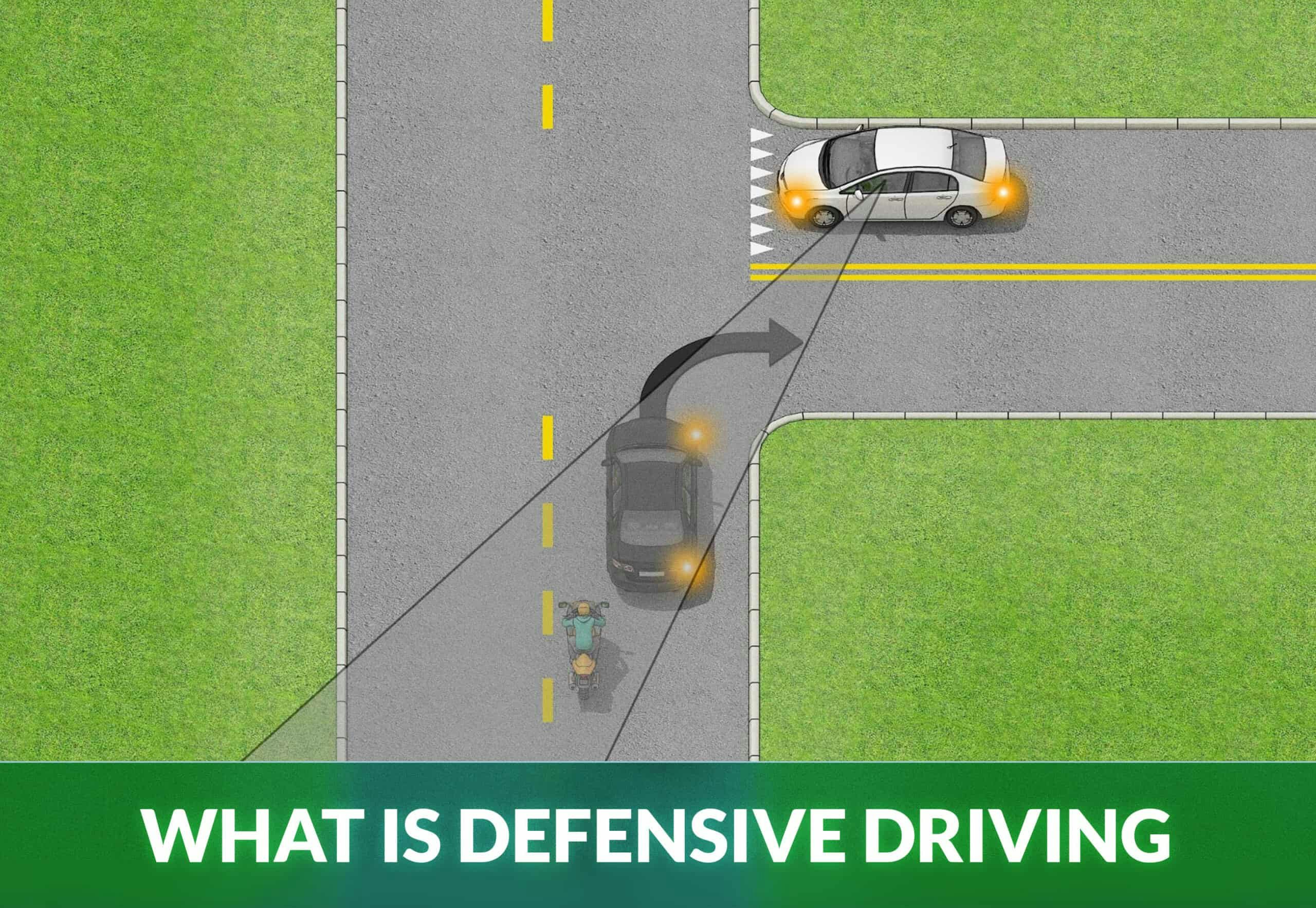
Defensive Driving: How to Be a Defensive Driver
Understanding what defensive driving means and adopting effective defensive driving techniques can greatly enhance road safety for everyone. In this article, we’ll share practical defensive driving tips to help you drive more safely and reduce risks on the road.
Defensive driving is also a key component of your driving test.
What is Defensive Driving?
Defensive driving is about using a number of safe driving techniques that enable you to identify hazards and adapt your driving before you are at risk of an accident. It’s about anticipating hazardous situations and making safe decisions based on the situation and road conditions. By learning defensive driving, you can minimize the risk of being involved in a crash as a result of your own or someone else’s error.
If every driver learned defensive driving, it would be possible to essentially eliminate most of the common accidents that are a result of tailgating or an insufficient safety margin around your car.
How to Drive Defensively (8 Techniques)
1. Start off the correct way
Do a quick check of your car, adjust your seat, mirrors, and any gadgets. Put your phone on “do not disturb” so nothing distracts you while driving, and always wear your seatbelt.
Before the driving test, you’ll need to complete a “pre-drive checklist” which includes many of these steps.
2. Keep a sufficient following distance
The more space you leave to the vehicle in front, the more time you’ll have to react and respond to a dangerous situation. Failure to leave enough space in front is called tailgating and is a very common cause of rear-end crashes.
A general rule is to have at least a 3-second gap to the vehicle in front of you in good conditions, called the “three-second rule”. You can measure your gap by a simple test:
- Note when the vehicle in front of you passes an object (e.g. road sign, building etc.) and count the seconds until you pass the same object
- If less than 3 seconds, slow down!
- If just above 3 seconds, it’s still safer if you slow down additionally

A fit and alert driver requires about 1 second to react to a hazard, and responding also takes time. Braking will often be the only appropriate response to avoid a severe crash, as swerving may result in a more severe crash, e.g. a head-on collision. In less-than-ideal conditions, you might need a much longer time to react and respond safely.
3. Signal before changing lanes or turning
Many drivers skip signaling, assuming they can change lanes or turn without affecting others. This simple oversight can lead to crashes that are easily avoided. By signaling before you change lanes or make a turn, you clearly communicate your intentions to other drivers (even those you may not see).
Get into the habit of signaling at all times. It’s more important than you might think.
4. Never exceed the safe speed
Speed makes a very big difference to your ability to stop in time and a significant difference to your chance of being involved in a crash. The “basic speed law” states that you must never drive faster than what is “reasonable and safe” for the current condition – it does not matter if the speed limit is higher.
For example; in less favorable conditions such as rain, snow, or icy conditions, you may be forced to drive much slower than the posted speed limit to give you time to stop for a hazard.
How Speed Affects the Stopping Distance
Small increases in speed also affect stopping distance. Increasing your speed just 10 mph from 50 mph to 60 mph increases the total stopping distance by up to 40%. In general, doubling the speed increases the braking distance four times, and tripling the speed increases the braking distance by nine times. That puts the danger of speed into perspective.
Here are two useful examples:
- At 30 mph you need roughly 120 feet to come to a complete stop (65 feet to react and 55 feet to brake) in good conditions.
- At 60 mph you need roughly 360 feet to come to a complete stop (130 feet to react and 190 feet to brake) in good conditions.
5. Know your blind spots
Your car’s mirrors can’t show you everything, which means there are spots you simply cannot see. These are called “blind spots”. Before changing lanes, always take a quick look over your shoulder in the direction you plan to move. This extra check helps you spot any vehicles or obstacles that may be hidden in your blind spots.
6. Plan ahead
An important aspect of defensive driving is to plan ahead. You need to start slowing down in time, change gears, and decide if stopping is necessary.
You will sometimes face situations with dangers on both sides of the road. Assess whether any danger is greater and requires more room, and position your vehicle accordingly. If both dangers are equally dangerous, position yourself in the middle.
Let’s take an example. Assume there are parked cars to your right and a child playing on the road to the left. The child most likely presents the greater danger and you should, therefore, slow down and position your vehicle away from the child.
7. Scan your surroundings
You need to be aware of how road users and pedestrians around you are behaving to adapt your driving. A pedestrian might be about to cross the road, a car may be tailgating you, or a car near you may suddenly change lanes.
By constantly scanning using your mirrors and looking to the sides you should be able to keep a safety margin around your vehicle. The safety margin can be likened to a ‘buffer’ between yourself and potential hazards that gives you time to react to hazards around you.
8. Be ready for surprises
Other drivers can be unpredictable. Keep an eye out for erratic moves from others, like sudden swerving or speeding up. Stay alert so you can react fast.
That’s it! If you’re learning to drive, our behind-the-wheel course is your fast track to driving confidence and success. Featuring professional online driving lessons, easy-to-follow step-by-step guides, parent training resources for effective at-home practice, and immersive virtual driving simulations, you’ll gain real-world skills in a risk-free environment. It is used by driving schools and students alike for better results.

550+ exam-like questions
All you need to ace your test
Perfect for first-timers, renewals and senior citizens
Recommended articles
Ace your DMV test, guaranteed
Want to Be the Top School in Your Area?
- Simple & automated admin
- More time for teaching
- #1 learning materials for students


